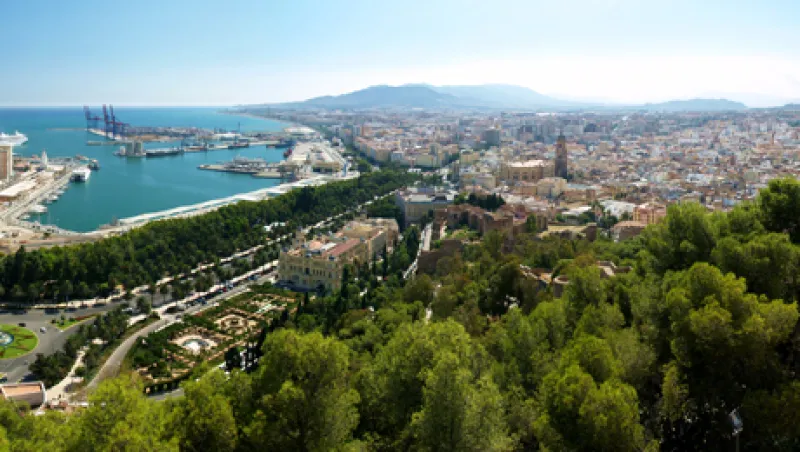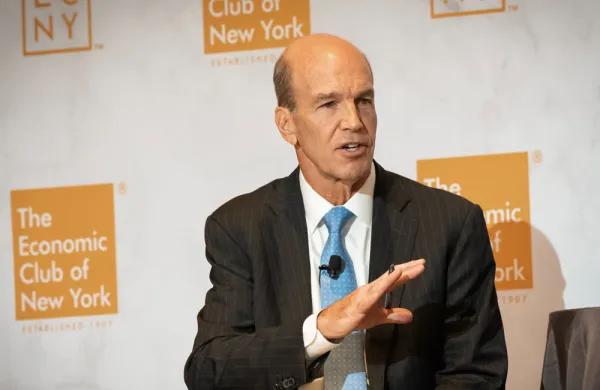CITIES ARE GETTING SMARTER ABOUT THEIR energy use. That’s a wise move: By 2050 the global population will have reached an estimated 9 billion, 70 percent of it urbanized, according to the Washington-based Population Reference Bureau. Cities can greatly reduce their environmental impact by switching to energy-efficient power grids that rely on alternatives to fossil fuels. Málaga, a city of 560,000 on Spain’s Mediterranean coast, is best known as the birthplace of artist Pablo Picasso. But lately, it’s pulled ahead of global centers like London and New York thanks to an initiative led by Madrid-based electric utility Endesa, a subsidiary of Italian energy giant Enel. Málaga now ranks as the smartest city in Spain, according to IDC Energy Insights, a Framingham, Massachusetts–based energy technology consulting firm.
Low-carbon economies present an opportunity for institutions like property/casualty insurance firms in search of sound long-term investments, Munich-based insurer Allianz noted in its 2011 annual report. David Jones, CEO of Allianz Specialised Investments in London, champions returns on renewable-energy projects as higher than those from bonds and independent of swings in the capital markets.
Launched in 2009, the four-year Málaga project aims to reduce carbon dioxide emissions by 6,000 tons each year and energy use by 20 percent annually. It includes 14 research centers, 11 technology companies, 12,000 homes and 300 industrial consumers. Endesa has installed some 11,000 smart meters that encourage customers to save money by shifting their power consumption to nonpeak hours.
Málaga is among the few cities that use purely low-capacity renewable energy from wind turbines and solar panels, whose output varies with changing weather conditions. And in one of the first such experiments, a partnership between Endesa and Tokyo-based Mitsubishi Corp., the project will test an intelligent-transportation system with a fleet of 200 zero-emission electric vehicles.
“This living lab is the best option to test different technologies relating to smart grids, to draw conclusions and prepare a cost-benefit study to analyze the profitability of different products and services,” says Cinzia Corsetti, a Rome-based smart-grids and new technologies development manager for Europe and America at Enel.
So far, Endesa and its partners in Málaga have invested €31 million ($41 million). Those are big up-front costs for a project that needs economies of scale to turn a profit. Then again, regulators have helped make smart cities a reality. In 2008 the European Parliament and the Council of the European Union passed climate and energy legislation that included a commitment from EU member states to obtain 20 percent of their energy from renewables by 2020.
Such a clear mandate has pushed the Málaga project and similar ventures along, says Roberta Bigliani, Milan-based head of the Europe, Middle East and Africa division at IDC Energy Insights. “If you don’t have that persuasion at the higher level, none of these things would have occurred,” she adds.
From 2000 to 2010 the European Investment Bank lent €58 billion to urban renewal and transportation projects, some of it through public-private partnerships called the Joint European Support for Sustainable Investment in City Areas (Jessica) funds. The EIB expects these projects to have a significant and long-lasting impact on sustainable urban development, explains Thomas Barrett, a Brussels-based director in the bank’s technical and financial advice department.
With European governments providing a strong regulatory framework and financial support, investor interest in smart cities is growing, says Eric Woods, a research director at the London office of clean-tech market intelligence firm Pike Research.
Jill Feblowitz, a Framingham-based analyst at IDC Energy Insights who covers utilities and oil and gas, says most U.S. institutional investors prefer smart utilities to smart cities. That could change as states and municipalities play a bigger role in setting clean-energy policies. For instance, the New York State Public Service Commission adopted a smart-grid policy last August. America may soon look to Málaga for more than artistic inspiration. • •
| Top Ten Intelligent U.S. Electric Utilities of 2011 Determined by energy technology consulting firm IDC Energy Insights and Intelligent Utility magazine, the annual UtiliQ ranking selects the 25 most intelligent U.S. utilities based on five metrics, including smart-grid initiatives. | ||||||
| COMPANY (LOCATION) | OVERALL IQ | PRODUCTIVITY IQ | RENEWABLE IQ | SMART-GRID IQ | DEMAND RESPONSE/ ENERGY FFFICIENCY/ PRICING IQ | IT SPENDING IQ |
| 1. San Diego Gas & Electric Co. (San Diego, CA) | 169 | 115 | 134 | 231 | 149 | 166 |
| 2. PG&E Corp. (San Francisco, CA) | 158 | 118 | 162 | 187 | 152 | 120 |
| 3. Austin Energy (Austin, TX) | 153 | 100 | 123 | 225 | 171 | 125 |
| 4. Pinnacle West Capital Corp. (Phoenix, AZ) | 147 | 112 | 110 | 164 | 205 | 118 |
| 5. Southern California Edison (Rosemead, CA) | 145 | 116 | 158 | 166 | 161 | 119 |
| 6. Idacorp (Boise, ID) | 142 | 113 | 100 | 193 | 148 | 127 |
| 7. Sacramento Municipal Utility District (Sacramento, CA) | 140 | 116 | 172 | 157 | 131 | 119 |
| 8. Portland General Electric Co. (Portland, OR) | 139 | 117 | 114 | 220 | 113 | 120 |
| 9. Salt River Project (Tempe, AZ) | 137 | 116 | 100 | 191 | 120 | 119 |
| 10. JEA (Jacksonville, FL) | 136 | 116 | 100 | 221 | 112 | 115 |
| Source: IDC Energy Insights. | ||||||






